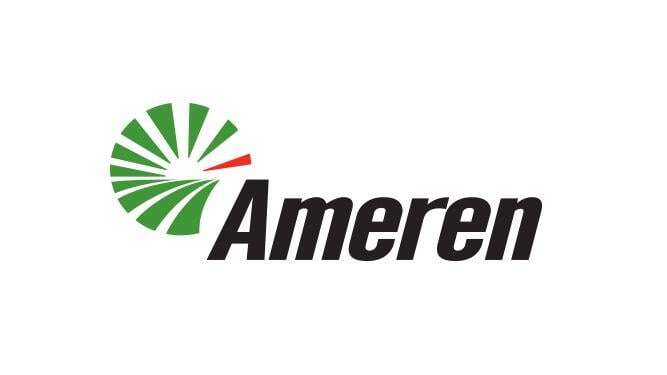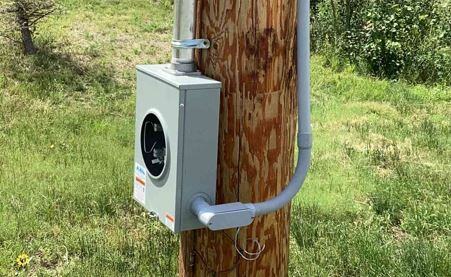Total Solutions Provider for Utilities & Industrial Communications
LinkedInFlexible Monitoring: IoT Solves Communication Challenges for Utilities in 2019
The Internet of Things (IoT) offers the utility industry an invaluable opportunity to perform targeted preventive maintenance. With the IoT utilities market expected to exceed $15 billion by 2024, it’s clear that the technology is quickly becoming an indispensable tool for utility companies.
Without an IoT system in place, maintenance workers manually perform a variety of tests to determine pole stability and structural integrity.  These tests are time-consuming, expensive and at times dangerous. According to the Bureau of Labor Statistics, electrical power-line installers and repairers had a 20.5 percent fatal work injury rate in 2015, making it among one of the most dangerous jobs in the country. Nonfatal occupational injuries are also all too common. In addition to the suffering these injuries cause, they also translate to many days away from work. In 2015, electrical power-line installers and repairers spent an average of 20 days away from work, higher than the eight-day average for all occupations.
These tests are time-consuming, expensive and at times dangerous. According to the Bureau of Labor Statistics, electrical power-line installers and repairers had a 20.5 percent fatal work injury rate in 2015, making it among one of the most dangerous jobs in the country. Nonfatal occupational injuries are also all too common. In addition to the suffering these injuries cause, they also translate to many days away from work. In 2015, electrical power-line installers and repairers spent an average of 20 days away from work, higher than the eight-day average for all occupations.
IoT is changing all that. Ameren did a pilot program that involved attaching a small IMU (inertial measurement unit) sensors to utility poles in Champaign, Illinois. These sensors included circuitry designed to measure movement and send data back to Ameren operators. The platform helps the utility efficiently and accurately monitor pole stability and structural integrity.
With the power of edge computing, the system learns what “normal” behavior for the pole is, and rather than inundate users with mountains of data, it sends an alert only if anything beyond that threshold occurs. Because the system is only dealing with a narrow margin of benefit, the sensor’s data usability and battery life are maximized. By analyzing the abnormal movement or angle of the pole, the system knows what needs to be serviced and can alert the right teams. Finally, the system has location ID, directing operators to the precise location of the pole.
Having real-time data on hand translates to better and more informed decision-making. Problems are caught and corrected before they cause widespread damage or require most costly overtime or nighttime work. Additionally, the flexibility of this IoT system and others like it means the technology is well suited to address the unique challenges the utility sector faces in urban, suburban and rural areas.
In rural areas—referred to as the “corn desert” in the Midwest—it can be logistically difficult to change out batteries. When edge computing is used, the system continually collects and saves data but can be programmed in multiple ways from the pole to the cloud, the pole to the gateway to the cloud or through mesh networking, using a combination of poles and gateways.
This arrangement maximizes the system’s battery life and minimizes the need for manual service. When data is needed on a frequent basis, mesh networking will transmit the data from pole to pole, solving the problem of how to communicate frequently without relying on battery-killing 3G or 4G.
In urban and suburban areas, interference from an abundance of devices poses a problem, as does over communication. Dense materials such as steel and concrete can also interfere with communication between the sensors and the cloud. Navigating that density can be difficult, but IoT solutions like those offered by Second Sight Systems / Atomation that are not wed to one communication protocol have the flexibility needed to adapt communication protocols to the environment. That flexibility serves utilities well in suburban areas, too, where the challenges usually fall somewhere between those posed by rural and urban zones.
About Second Sight Systems
Second Sight Systems has been providing communication tower services, IoT system integration, and utility field services since 1999 and has engineers on staff with extensive experience with SCADA communications and telemetry applications for remote monitoring. Second Sight Systems partners with Atomation, an IoT platform provider, to deliver technology solutions for use in the utility and communication tower industries.
Second Sight’s track record of completing highly secure projects on schedule and at the highest service level can’t be matched.
As an exclusive distributor and integrator of GE’s next-generation MDS™ radios, Second Sight is a one stop shop for SCADA (Supervisory Control and Data Acquisition) communications for Utilities and Industrial applications, supplying a full-range of wireless solutions. To learn more, visit https://prdsecondsight.wpengine.com/services/wireless-data-systems/ or contact our Cybersecurity and Wireless Data Systems Team today at info@sssrf.com.
Contact Us
844.789.9111
info@sssrf.com
www.sssrf.com
RECENT NEWS
Second Sight Systems Joins the Enterprise Wireless Alliance (EWA)
February 28, 2019SSS Awarded Construction of New 295' Communication Tower near Farrar, MO
February 28, 2019CATEGORIES
- News (49)
- Contracts (18)
- Utilities (12)
- Missouri (9)
- Company (8)
- Installation (8)
- GE MDS (7)
- AMI (6)
- Cybersecurity (6)
- Smart Grid (6)
- Ameren (5)
- Project (5)
- Telecom (5)
- Critical Infrastructure (4)
- Meter Services (4)
- Politics (4)
- Submetering (4)
- Towers (4)
- Utility Field Services (4)
- DistribuTECH (3)
- Future (3)
- Safety (3)
- Texas (3)
- Charity (2)
- Denver (2)
- Disaster (2)
- Electricity (2)
- Illinois (2)
- IoT (2)
- Kentucky (2)
- Landys & Gyr (2)
- Louisiana (2)
- NERC (2)
- OSHA (2)
- Oklahoma (2)
- Reading (2)
- Spire Networks (2)
- US Air Force (2)
- WBE/WBENC (2)
- Water Meter Replacement (2)
- White Papers (2)
- colorado (2)
- #SAMEDOD (1)
- #UTCTnT (1)
- APPA (1)
- Atomation (1)
- Best Practices (1)
- Cellular (1)
- Certifications (1)
- DEMCO (1)
- Data (1)
- ENSIGHT+ (1)
- Education (1)
- Engineers (1)
- Event (1)
- Evergy (1)
- FCC (1)
- Ferguson (1)
- Fiber Splicing (1)
- Florida (1)
- GRDA (1)
- Hillwood Alliance (1)
- Holiday (1)
- Itran (1)
- Kamo Power (1)
- MEA (1)
- Minnesota (1)
- Nebraska (1)
- North Carolina (1)
- Perot (1)
- Plugfest (1)
- Pralle Meadows (1)
- Presentation (1)
- Radios (1)
- Report (1)
- SCADA Tech Summit (1)
- STEM (1)
- Smart Water Summit (1)
- Sports (1)
- St. Louis (1)
- Staffing (1)
- Synergy (1)
- TechAdvantage (1)
- UBBA Summit (1)
- Utility Cost (1)
- Veterans (1)
- Virginia (1)
- Wastewater (1)
- Wireless (1)
- Woodcrest Capital (1)
- quality (1)
- trends (1)



